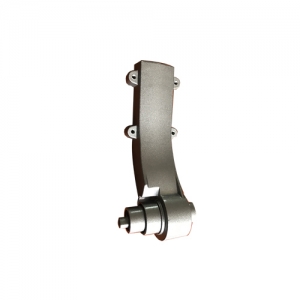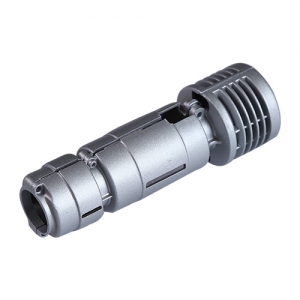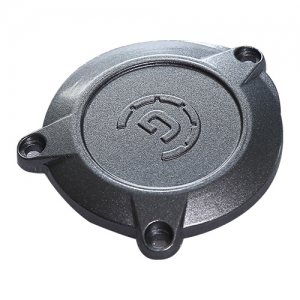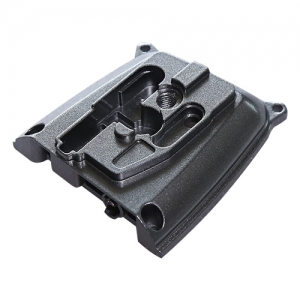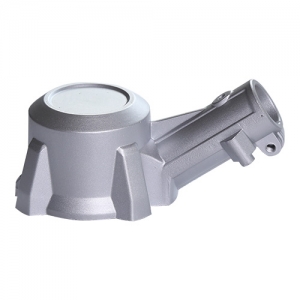Aluminum alloy die casting
- Product classification:Tool component
- product labeling:Medical Device Parts and Components Garden tools Other accessories 2494P-L front cover Aluminum alloy die casting 2520P-L front cover Aluminum alloy die casting Aluminum alloy die casting 2527P-L front cover Aluminum alloy die casting 2538P-L front cover High iron handrail Camera housing Magnesium alloy die casting Aluminum alloy die casting
- Times of browsing:Already1053Customer focus
The pre-plating treatment of die-cast aluminum/aluminum die-casting parts includes four important processes: degreasing, acid etching, electroless plating or displacement plating, and pre-plating. The key to this is electroless plating or displacement plating, so often the experiments to be done are concentrated in this process. Of course, different aluminum materials and different processing methods have different requirements for pre-treatment. For example, the pre-treatment of die-cast aluminum parts and rolled aluminum parts is very different, and even the same processing method, different aluminum materials are different. The pre-treatment process, such as the amount of copper in the aluminum, directly affects the bonding strength of the coating. The experiment of pre-treatment planning for electroplating of die-cast aluminum parts is also a systematic comparison experiment. It is required to perform different selected pre-treatment processes on the samples, and then perform the same electroplating process, and then test the bonding force. The key to this comparison experiment is to ensure that all processes except the different process points are the same, otherwise there is no comparability and no comment can be made.
There are four common methods for die-casting aluminum parts:
Aluminum phosphating
The effects of accelerator, fluoride, Mn2+, Ni2+, Zn2+, PO4 and Fe2+ on the phosphating process of aluminum were studied by means of SEM, XRD, potential-time curve and membrane weight change. The research indicates that cerium nitrate has the characteristics of good water solubility, low dosage and rapid film formation. It is a useful accelerator for phosphating of aluminum: fluoride can promote film formation, increase film weight and refine grains; Mn2+, Ni2+ can show The grain is refined to make the phosphating film uniform and fine, and the appearance of the phosphating film can be improved; when the concentration of Zn2+ is low, film formation or film formation is not good, followed by an increase in Zn2+ concentration, and the film weight increases the O4 content to the phosphating film. The effect is greater, and the content of PO4 is improved to increase the weight of the phosphate film.
The alkaline electropolishing process of 6+ aluminum was studied in the alkaline polishing solution system. The effects of corrosion inhibitors and viscosity agents on the polishing were compared. The alkaline solution system with good polishing effect of zinc-aluminum die-casting was successfully obtained. And for the first time, an increaser that can lower the operating temperature, prolong the service life of the solution, and improve the polishing effect together is obtained. The experimental results indicate that the addition of a suitable additive to the NaOH solution produces a good polishing effect. The exploratory experiment also found that after DC constant pressure electropolishing under certain conditions with glucose NaOH solution, the surface reflectance of aluminum can reach 90%, but there are still unstable factors in the experiment, which needs further study. The feasibility of using DC pulse electropolishing method to polish aluminum under alkaline conditions was explored. The results indicated that the pulse electrolysis polishing method can achieve the leveling effect of DC constant pressure electropolishing, but its flattening speed is slow.
Aluminum and aluminum alloy environmentally friendly chemical polishing
Determining the development of a new environmentally friendly chemical polishing technique based on phosphoric acid monosulfate, which requires zero emissions of NOx and overcomes the quality shortcomings of similar skills in the past. The key to the new skill is to add some special compounds to the base fluid instead of nitric acid. For this reason, the primary demand for the chemical polishing process of aluminum triacid is analyzed, especially the role of nitric acid. The primary role of nitric acid in the chemical polishing of aluminum is to improve the polishing brightness by deuterium corrosion. Combined with the chemical polishing experiment in simple mono-phosphoric acid, it is considered that the special substances added in the mono-phosphoric acid should be able to corrode and reduce the overall corrosion, and it is necessary to have a better leveling and lightening effect.
Electrochemical appearance strengthening treatment of aluminum and its alloys
The process, function, trace, composition and structure of aluminum-based and its alloys in the neutral system constituting the ceramic-like amorphous composite conversion coating, began to explore the film formation process and mechanism. The results of the process study indicated that in the Na_2WO_4 neutral mixing system, the concentration of the film-forming accelerator was controlled to 2.5-3.0 g/l, the concentration of the complex membrane was 1.5-3.0 g/l, and the concentration of Na_2WO_4 was 0.5-0.8. g / l, peak current density of 6 - 12A / dm - 2, weak mixing, can obtain a complete uniform, glossy gray series of inorganic non-metallic film. The film has a thickness of 5 - 10 μm and a microhardness of 300 - 540 HV, and is excellent in corrosion resistance. The neutral system has good adaptability to aluminum alloy, and can be well formed on various series of aluminum alloys such as rust-proof aluminum and forged aluminum.
Previous page:Aluminum alloy die casting
next page:Aluminum alloy die casting

